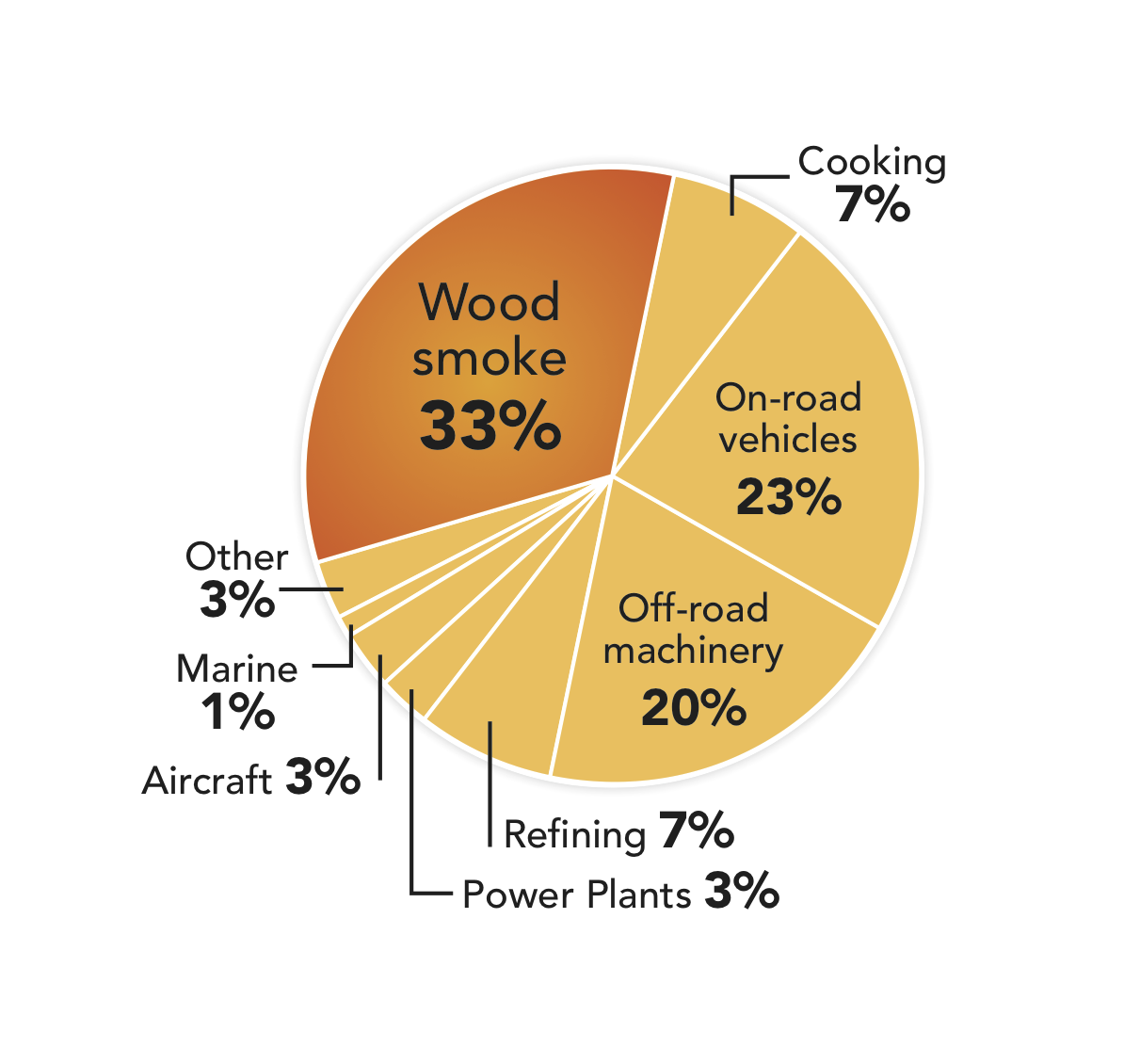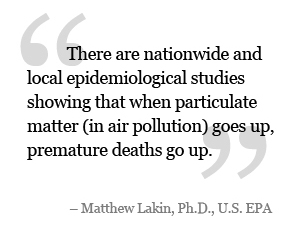Particle Pollution
Wood Smoke and Particle Pollution
Burning wood creates significant amounts of particle pollution. And the more scientists have learned about particle pollution, the more alarmed they’ve become.
Scientific studies have now linked particle pollution with a litany of health problems that include asthma attacks, diminished lung function, respiratory ailments, heart attacks, and stroke.
Both chronic and short-term exposure to particle pollution have been linked to increased hospital admissions and emergency room visits—and even to premature death from heart or lung diseases. Epidemiologic studies indicate that tens of thousands of excess deaths per year, and many more cases of illness, result from exposure to PM.
These are just a few of the reasons the U.S. Environmental Protection Agency now considers fine particle pollution its “most pressing air quality problem.”
The most hazardous particles from wood burning are smaller in diameter than a human hair. These fine particles are too small to be filtered out by the nose and upper respiratory system, so they end up deep in the lungs. Shutting the windows and doors of your home will not protect you from fine particle pollution—the particles are so small that they will infiltrate even the best quality double-paned windows and doors.
In the winter, residential wood burning produces more particle pollution than any other single source in the Bay Area, accounting for 30-50% of this area’s particle pollution. This adds up to 6,000 tons of sooty particles annually, more than the entire region’s vehicles and businesses.






